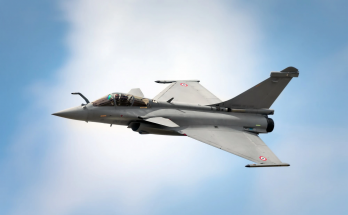Back on April 14, the International Monetary Fund announced the expected when it noted that the global economy is in a tailspin as entire economies are brought to a standstill due to the novel coronavirus (COVID-19) pandemic.
The IMF expects the world economy to contract by 3 percent in 2020, a severe shock when compared to the 0.1 percent reduction in the worst year of the last global downturn, 2009.
Advanced economies such as those in the European Union, Canada, Japan, the United Kingdom and the United States are set to experience outright contractions, while emerging ones such as China and India are expected to see weak growth.
Economic headwinds are often accompanied by reduced year-on-year growth in discretionary spending at the national level. Drilling down to select earmarks within said discretionary spending, defense generally stands to suffer in countries with advanced economies. In many cases, major defense procurement projects are deferred, downsized or scrapped altogether, coupled with implantation of force restructurings that involve shrinking personnel numbers.
While forecasts anticipate flat or declining topline defense budget trajectories among many countries stemming from COVID-19 relief measures, the same cannot be said for two peer rival states angling for strategic leverage in the Indian Ocean Region: China and India. Though defense-related spending may slow this year and possibly next, the investment paths in the two nations are unlikely to remain flat beyond 2021 as both continue to modernize their respective militaries.
The two nations each seek to assert economic and geopolitical influence and naval clout across the Indian Ocean Region (IOR), the world’s third-largest oceanic area. Economic slowdown and deficit concerns notwithstanding, each country’s strategic goals remain unchanged.
The vital shipping lane stretching from the Persian Gulf into the Arabian Sea and across the Indian Ocean represents a lifeline for both nations. About 60 percent of Chinese oil travels this route. More crucially, some 84 percent of China’s imported energy passes through the heavily pirated maritime choke-point Strait of Malacca from the Indian Ocean. As for India, it conducts 75 percent of its foreign trade (by value) and imports 75 percent of its oil – with nearly all of that coming from the Middle East – by sea.
Beijing has slowly but steadily been trying to build a military logistics chain stretching from national borders out to Djibouti and beyond to protect its massive Belt and Road Initiative (BRI) infrastructure program that stretches from East Asia into Europe. Currently China lacks sufficient capabilities to support large-scale military expeditionary operations in distant locales, but continued progress would likely enable People’s Liberation Army forces to conduct a high-level overseas combat operation by 2035 or shortly thereafter.
This naturally raises concerns in New Delhi, where, due to the nation’s multitude of threats, security awareness spans 360 degrees like a rotating light from a lighthouse.
Foremost of these relates to neighboring Pakistan, India’s fiercest regional rival. Already alarmed by the increasing geopolitical alignment between China and Pakistan, India is nervously watching Beijing’s investments in the China-Pakistan Economic Corridor (part of the BRI) involving a network of roads, railways and pipelines connecting China’s western Xinjiang Province with the Pakistani port of Gwadar.
Then there is Beijing’s steady progress in achieving access to maritime basing rights, the so-called String of Pearls theory, whereby construction of, and access to, overseas commercial port infrastructure would de facto serve a dual civil-military role, with the commercial element providing cover for stockpiling munitions, etc., to support combat operations.
Meanwhile, China’s People’s Liberation Army Navy (PLAN) has remained active during the COVID-19 pandemic, going so far as to ramp up its activities across the East and South China seas while increasing its presence in the IOR. The pause in military war-gaming exercises between the U.S. and its regional partners in Asia has presented an opportunity to exploit a vacuum.
“China’s deployment of research vessels, UUVs and submarines in the Indian Ocean Region, even when the Covid-19 virus was ravaging the country, has not shown any decline.” @orfonline https://t.co/C2iIrMYn78
— SCS_Disputes (@SCS_Disputes) April 24, 2020
Beijing’s end-goal is to circumvent what would prove a crucial vulnerability in time of conflict, that being the need for secure shipping lanes to ensure its vital energy supplies from the Middle East are not disrupted.
Attacking and disrupting China’s long and vulnerable sea lines of communication therefore represents an opportunity for India in the event of an outbreak of hostilities between the two nations.
But to do so, India must continue modernizing its navy, strengthening its presence in the outlaying Andaman and Nicobar islands, and deepening relationships with like-minded countries throughout the region as well as its international consultation partners in the Quadrilateral group, the so-called Quad involving Australia, India, Japan and the United States.
Modernizing the Navy represents a tricky aspect, as lingering budgetary pressures were already forcing difficult choices upon Indian Navy brass.
As a result, the naval chiefs are opting to de-scale some projects such as the crucial procurement of mine countermeasures vessels (MCMVs) and additional Kamov Ka-31 early-warning helicopters, while abandoning others – including a project for four landing platform docks (LPDs) – altogether. A long-standing goal of having 200 warships in service by 2027 is now pruned to a more realistic 175.
Some relief appears on the horizon, however, as the first indigenous aircraft carrier, INS Vikrant, is expected to reach Full Operational Capability status in 2022, thereby bringing the number of carriers available to the Navy to two.
By 2027 the Navy should be fielding all five of its Arihant-class nuclear-powered ballistic missile submarines (SSBNs), as well as its full complement of six French Scorpene-design diesel-electric attack submarines. Other surface combatant capabilities – including four additional Project 15 destroyers, seven new Project 17A frigates, and four Advanced Talwar frigates – should also arrive by then to supplement the existing warship inventory.
Meanwhile U.S.-sourced platforms, including 24 new multimission Lockheed Martin-Sikorsky MH-60R Romeo Seahawk naval helicopters and 12 Boeing Poseidon P-8I maritime patrol aircraft (with at least six more expected to be ordered), will provide additional airborne capabilities for the Indian Navy to utilize.
Yet other key projects – such as a second indigenous aircraft carrier (IAC-2), six diesel-electric attack submarines (SSKs) featuring air-independent propulsion (Project 75I), and a $10 billion bundled naval helicopter procurement initiative involving 123 naval multirole helicopters (NMRHs) and 111 armed naval light utility helicopters (NUHs) – are unlikely to be anywhere close to the finish line by 2027.
Against this, the Indian Navy will confront a PLAN with ever-expanding surface and submarine capacity and improved fleet auxiliary arm and operational sustainability, plus mushrooming naval logistics bases. With the PLAN also improving and increasing its ties to the Pakistan Navy, the threat of a collaborative challenge also enters the strategic equation.
Though geography favors India in a Sino-Indian struggle for IOR influence, the challenge presented by China only continues to grow. Addressing how best to meet that challenge is the calculation weighing on New Delhi with every debt-trap diplomatic advance Beijing makes in the region.

Photo via BMN Network on Flickr
Dan Darling is Forecast International’s director of military and defense markets. In this role, Dan oversees a team of analysts tasked with covering everything from budgeting to weapons systems to defense electronics and military aerospace. Additionally, for over 17 years Dan has, at various times, authored the International Military Markets reports for Europe, Eurasia, the Middle East and the Asia-Pacific region.
Dan's work has been cited in Defense News, Real Clear Defense, Asian Military Review, Al Jazeera, and Financial Express, among others, and he has also contributed commentary to The Diplomat, The National Interest and World Politics Review. He has been quoted in Arabian Business, the Financial Times, Flight International, The New York Times, Bloomberg and National Defense Magazine.
In addition, Dan has made guest appearances on the online radio show Midrats and on The Media Line, as well as The Red Line Podcast, plus media appearances on France 24 and World Is One News (WION).




